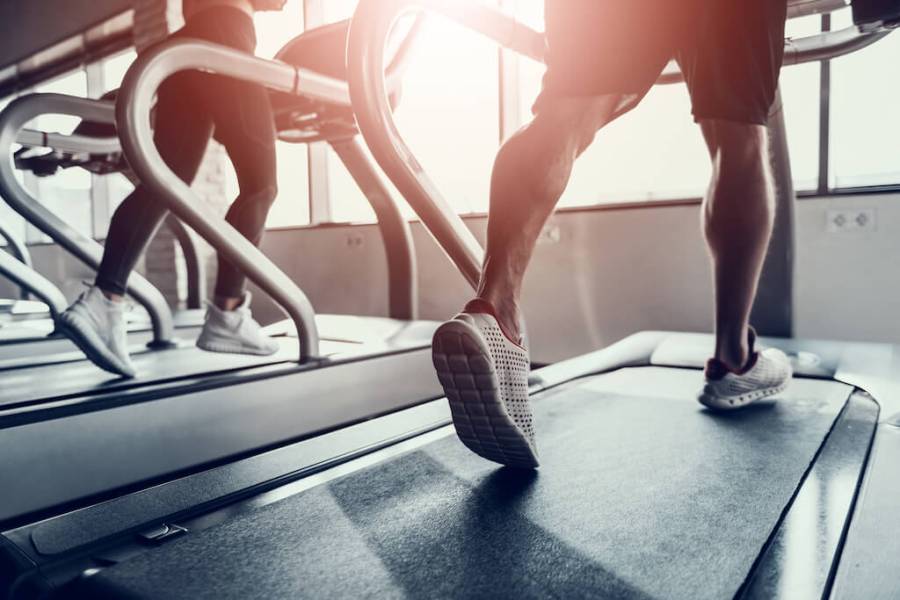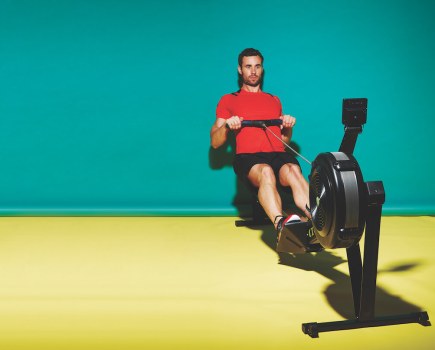Whether you’re pounding the pavements or tearing up the treadmill, you’d think the fitness benefits would be the same. But when it comes to treadmill vs outdoor running, there are subtle differences to each…
Putting on a pair of the best running shorts and shoes and getting in regular running sessions has numerous benefits. But is there a difference between treadmill running and outdoor running, and if so which is best for us?
We asked biomechanics specialist Bente Smith-Rewse for some expert insight…
Treadmill vs outdoor running
Enjoying a walk or run, whether on the treadmill or outside, offers numerous benefits for mind and body. Doing so for 25 minutes, 5 days per week, will improve your cardiovascular fitness, posture, sleeping patterns and energy levels, as well as mental health. There’s also the calories burned and the potential for weight loss.
If you have the space, having a treadmill at home is a great way to get in runs when time is short or the weather inclement. It’s also an ideal piece of kit if you’re recovering from an injury under the supervision of a professional clinician. A treadmill can reduce recovery time, as it takes away uneven surfaces and stabilises your gait. You have the advantage of being able to adjust the incline, speed and time of your session as well. However, the treadmill should be used carefully if you’re prone to injuries.
Making sure your best running shoes are correct for your needs is very important but also consider having shock-absorbing insoles. These will help give you greater protection for your lower limbs and feet, reducing the risk of injuries.
There are a few things you need to consider when figuring out how to use a treadmill. The surface length of the treadmill may influence your step length, lessen stride time and worsen long-range correlation of stride intervals. However, it can significantly increase the stability in your gait and upper trunk but reduce gait regularity during the swing phase.
Studies have shown that the differences in the lower knee range of motion and muscle activation patterns (lower tibialis anterior and gastrocnemius activity in the stance phase) are lower on a treadmill than outside walking or running. The largest mean difference between treadmill and regular running stability is on the tibia.
Treadmill vs outdoor running: differences in biomechanics
The way the treadmill belt propels you forward means you use less of your hamstring muscles. Your quads do most of the legwork instead. That in turn means you’re working your quads harder than if you were outside. Your natural running gait could therefore change.
Overuse injuries are due to repetitive motion, and this is likely to happen quicker on a treadmill than outside. That’s because you’re using the same muscles and joints repeatedly on a treadmill. So muscle tears, chronic knee pain or other issues can become a problem. It’s therefore important your treadmill workout is kept to 25 minutes or less per session.
If you’re training for a race, consider reducing the treadmill work and spending more time outside, ensuring your natural gait is aligned correctly. To be race ready, your feet, ankles and lower limbs will all need to become accustomed to the ground surface, so it’s a vital part of any training programme.
You’ll also need to feel acclimatised to the weather, be it cold, wind or rain. And you’ll find your breathing patterns in fresh air may change compared to indoor spaces, especially air-conditioned ones. So a balance of both forms of training is recommended.
Running outside can be just the escape we need from everyday demands and technology. But do be aware that when we run outside, be it on grass, trail or road, uneven surfaces can cause twisting or rolling of your foot, ankle or knee and therefore possible injury.
If the ground is soft (for example on your local parkrun route), that will have less impact on your bones and joints. Your muscles work harder because of the softness, which in turn burns more calories. If you’re doing inclines or hill training, again be careful to choose a firm surface free of obstacles or loose stones. Hill training outdoors is an excellent addition to any training programme for your endurance fitness and cardiovascular system.
Related content:







